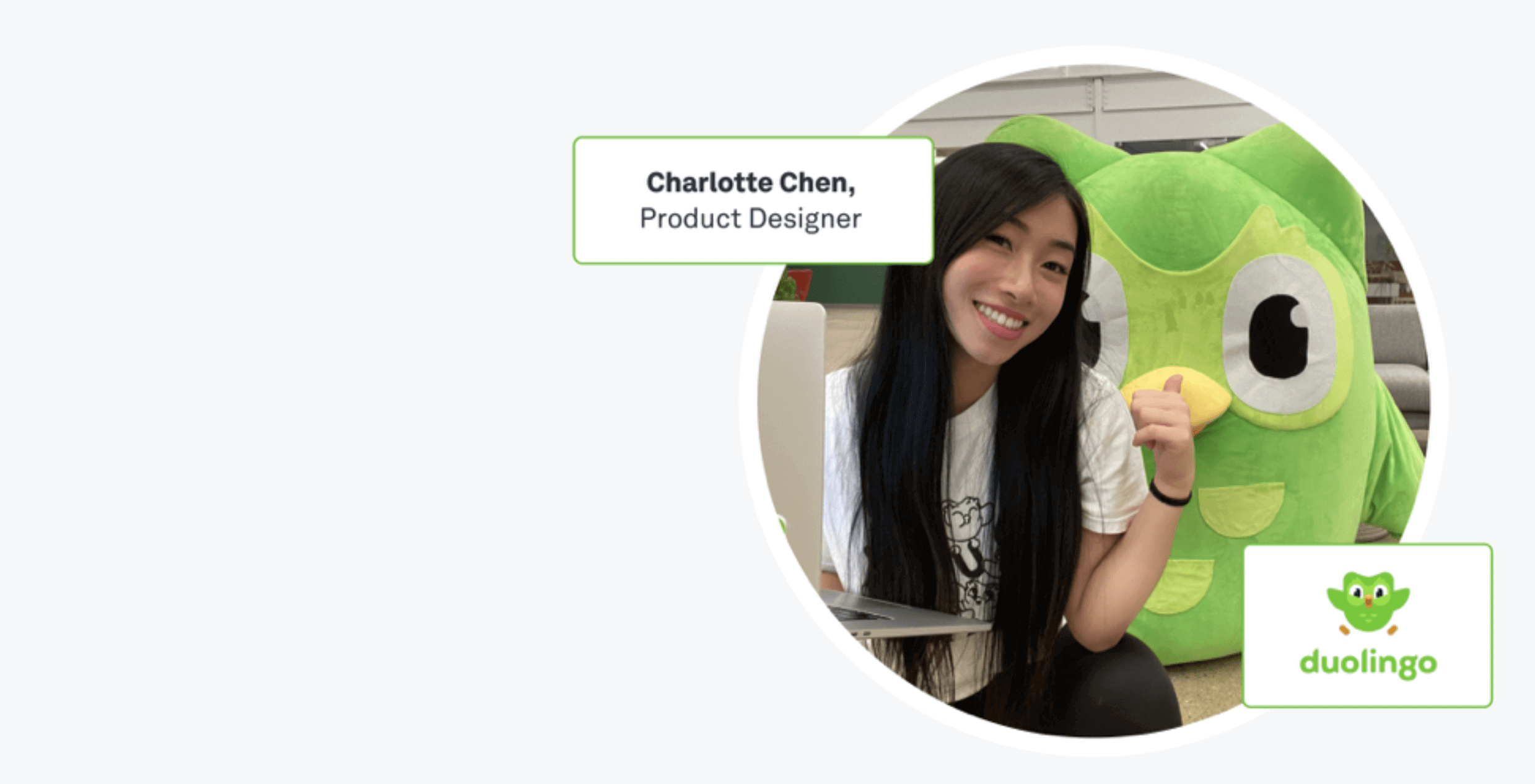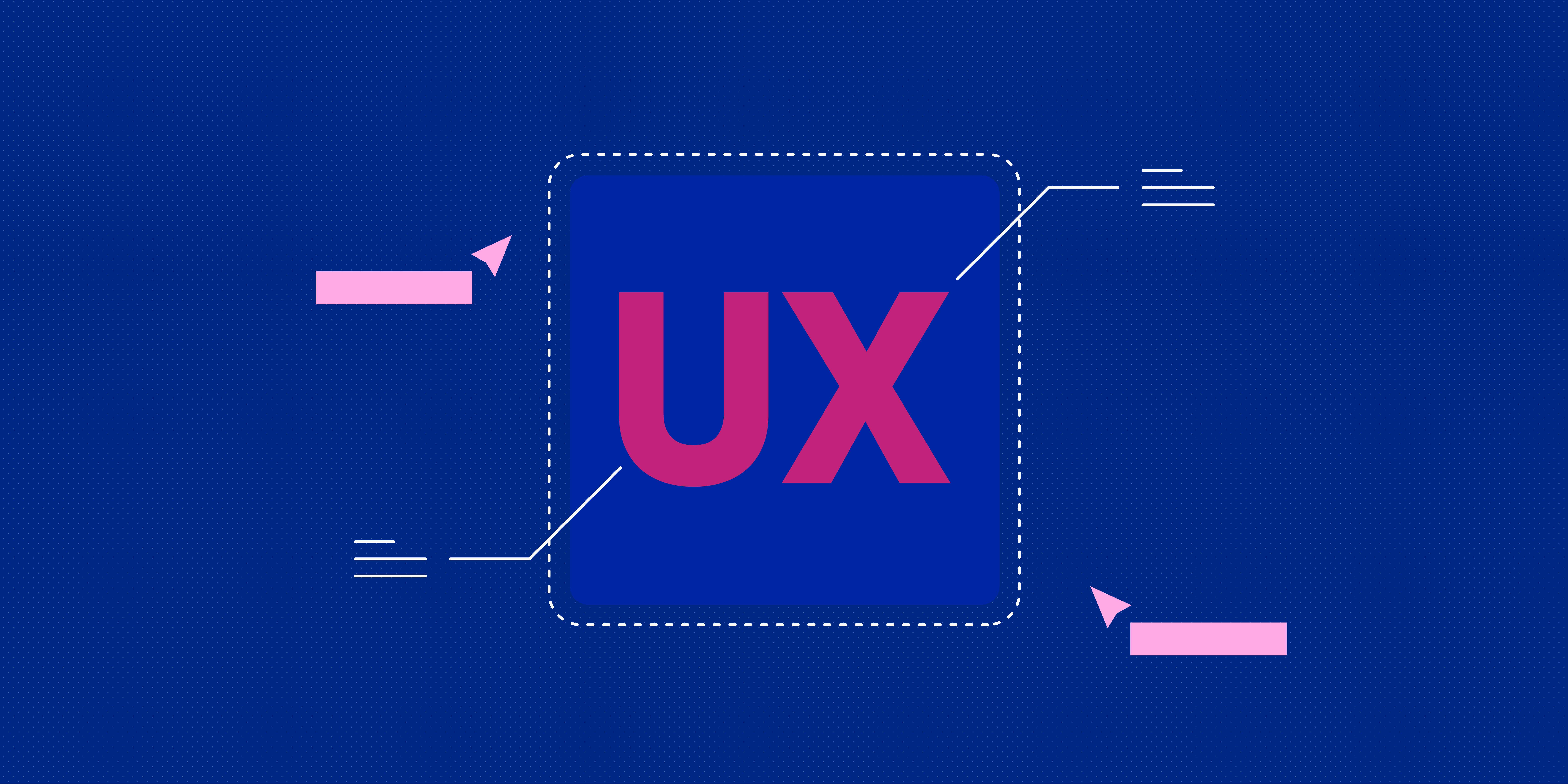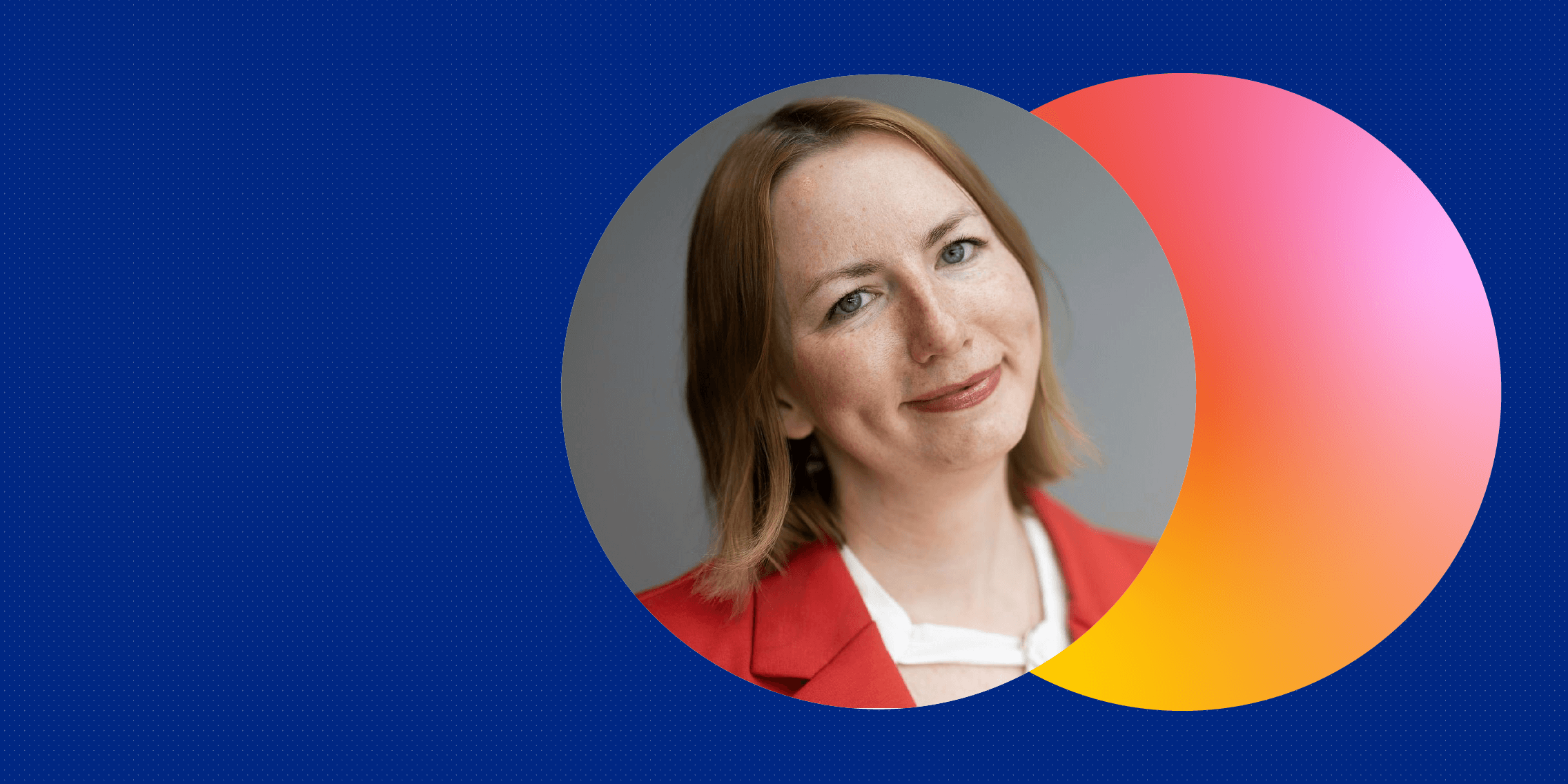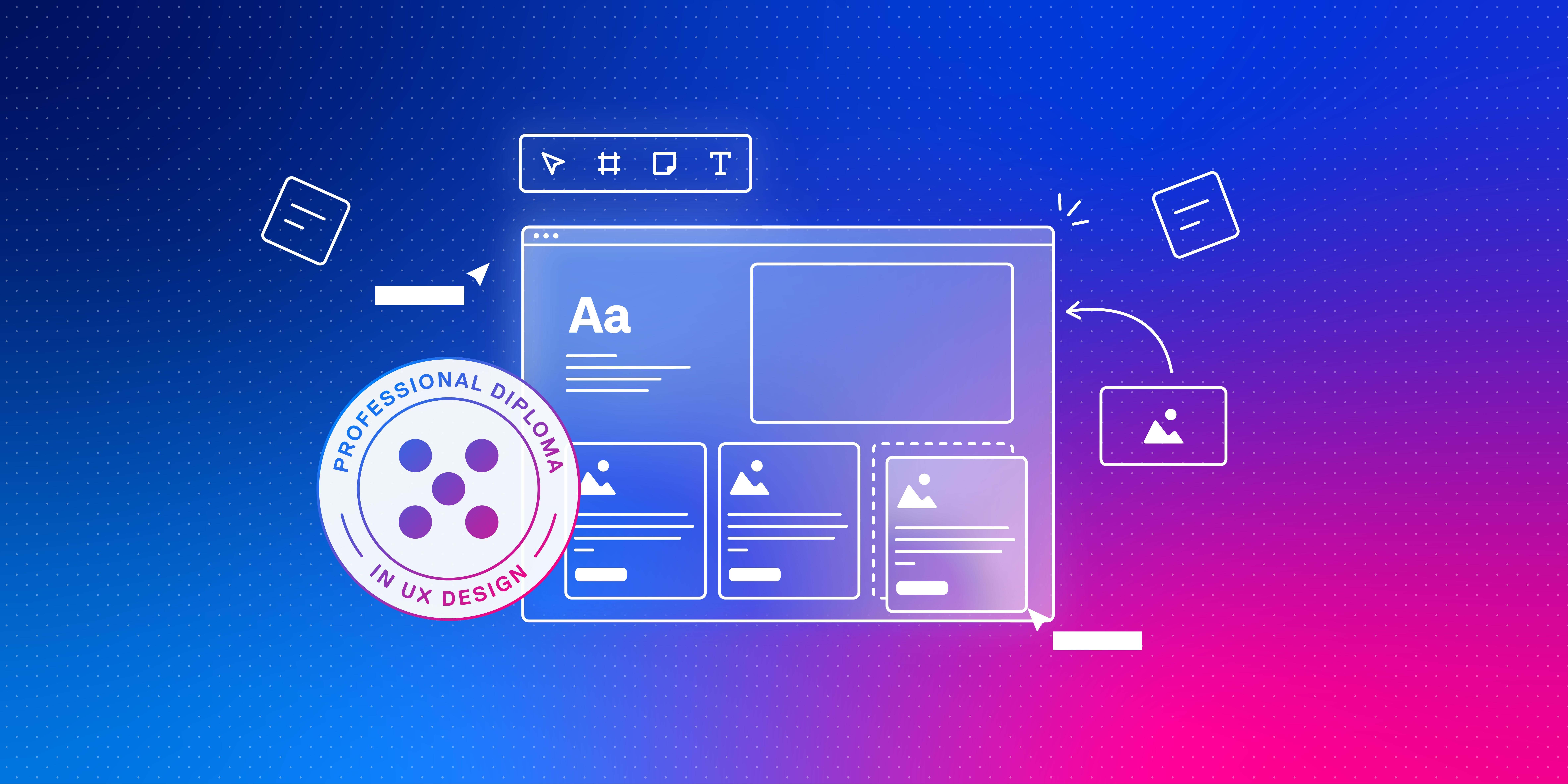Charlotte Chen is a Product Designer at DuoLingo, an app that leverages gamification and an engaging interface to help users learn new languages in just minutes per day.
Charlotte began teaching herself design and dabbling in freelance work while earning her degree in Computer Science from the University of British Columbia. This led to her current position on DuoLingo’s Growth Team, where she develops new features to grow the app’s user base.
In her free time, Charlotte likes to design for Web3 projects, build no-code websites in Webflow, and mentor aspiring designers. She joined us as a guest for a recent UX Insiders event to share her story and day-to-day life at DuoLingo.
You can view the whole event here or read the highlights below to see what it’s like to go from having no design experience to being part of a tight-knit, creative design team at an innovative global company.
Can you tell us a bit about your background?
I was born and raised in Vancouver and studied Computer Science at the University of British Columbia. But I hated it. I didn’t know how to code, the classes weren’t fun, and I just didn’t understand anything. I liked talking to people, and I kind of enjoyed the business aspects of things, so I decided to get my real estate license and become a realtor at age 19.
That was kind of hard and a little bit silly. I was seeing clients and going to school at the same time, so sometimes I would have to tell clients that I couldn’t meet with them because I had an exam. That didn’t last very long! My mom told me to go back to school and get my degree, but nothing really changed. I still didn’t enjoy it.
Then I attended my first hackathon at the University of Washington and learned there was more to tech than coding. That was the first time I designed anything or worked with engineers. As a kid, I loved arts and crafts, and I loved drawing, but I didn’t really know how to connect that with tech. When I realised there was a role in tech that would allow me to apply my creativity, I thought, “This is really neat.”
I started learning UX in my spare time and took on freelance projects to gain design experience. I posted on Facebook groups, LinkedIn, and everywhere online and reached out to all my friends to let them know I was looking for design work. I was still in school, but I spent a lot of time networking and having “coffee chats” with other designers. Most people were very willing to help since many of them had also learned design on their own.
I got my first design internship at Xperiel and continued to take on freelance work and add to my portfolio until I got my design internship at DuoLingo. It was remote, but I still felt really close to my team. I moved to Pittsburg, where the DuoLingo office is, about a year ago to work as part of the Growth Team.
What are some challenges in transitioning from a non-design background to a design job?
I think the biggest one is not knowing what you don’t know. You have to catch up since you didn’t go to design school, and there are so many resources. It’s hard to know where to start. I figured out what I needed to know to get the job I wanted and worked backwards from there.
My advice for other people coming from non-design backgrounds is to be good at your technical skills. Learn product design by researching on Google, taking courses, or going through a boot camp. Practice a lot to hone your design craft. Develop soft skills like communication and teamwork at hackathons where you have to work with people like engineers and PMs, or collaborate on hobby projects with other designers. And talk to everyone! Reach out to strangers, and build a network of design friends you can learn from.
Your experience from other fields can be useful depending on what type of job you interview for. Big companies just want you to be good at design because they already have a team to handle other roles. But smaller companies usually need people who can wear a lot of hats. Do your research to understand and speak to the role you want. Highlight your strongest, most relevant skills, and draw on your experience to show what you can bring to the job.
What’s a typical day at work for you?
I arrive at the office at 9:00 a.m. to check Slack and emails. This is usually some of my heads-down work time: before everyone comes in, I have quiet time to get some work done. Around 9:30 a.m., I stop to play with one of the office dogs. We have a very dog-friendly office, and a lot of people bring their dogs to work.
From 10:00 a.m. to 12:30 p.m., I have meetings with the design studio team, PMs, and engineers. We brainstorm, work on wireframing, sketch concepts, and get alignment on our work. This is a really fun part because I get to collaborate with people from other functions.
Twelve-thirty is lunchtime! I go into work every single day probably because of lunch. We have an in-house chef at DuoLingo, so there’s always new food to try. And it’s a great chance to sit and talk about non-work things with people who aren’t in your function.
After lunch, from about 1:30 p.m. until 5:00 p.m., I have more meetings. Sometimes I check in with engineers to make sure what they’re working on matches what I designed or meet with animators to see their sketches and animations. I also connect with QA to ensure that new features look right and work well on all devices. This is also a time to collaborate and brainstorm on Figma with PMs, content writers, and other designers. Usually, before we kick off a big project, we do something like this to get everyone’s thoughts down.
By 5:00 p.m., it’s just about the end of the day, and I probably need some sugar at this point. We have a well-stocked kitchen with drinks, snacks, and cereal available all day, so I grab something before heading downstairs to the gym.
I really love the culture at DuoLingo. There are board games, game tables, and a big TV at the office. I spend a lot of my weekends with our office volleyball club, and we have a ton of parties. Every year, we go on a non-work trip to Cancun to relax and socialize.
Tell us about the projects you work on at DuoLingo. What’s the research process like to ideate and test new features?
Our mission at DuoLingo is to develop the best education and make it available to everyone through our app. We don’t want to make learning boring; we want to make learning fun. So we disguise a lot of that through gamification.
DuoLingo has done a lot of user research over the last 10 years to understand behaviors and gauge interest so we can design features with the highest ROI. We create designs based on that research, test them, and implement them to get feedback.
The Growth Team aims to grow and retain users through these gamification features. We use cute animations like Duo, our mascot, to lead people through onboarding. Our “kudos” feed increases social interaction and encourages people to keep coming back. We also added features like streaks and a leaderboard for extra motivation.
I work with PMs, other designers, and engineers to bring these features to life. The PMs define the project requirements, and the product team brainstorms concepts and prioritizes new features. The designers create something based on those concepts, get feedback, and bring the feature to the product review process so the execs can check the work. Then the engineers implement the design, and the designers and QA team review the implementation to make sure it’s in line with the original concept and works the way it should.
After we launch a feature, we compare it with the control and see if our metrics are positive. If it is, it means our new feature is probably retaining more users. And if the metrics are negative, it probably means that something isn’t working and that we need to shut it down or iterate on it again.
We use an internal metrics dashboard to monitor user performance but don’t watch metrics too closely. It takes longer to see and understand the bigger effects of a new feature.
What traits does a person working in UX design need to have?
You need to be willing to learn. That willingness can help you land a job because it shows you have already put in the work to become self-taught. And you have to be driven to keep learning. The tech field changes a lot, and there will always be new and better ways to do what you’re doing. Keeping up with new trends and tech will help you improve your skills.
I’d also say that being able to collaborate is important. Practice working with other people on design projects, learn the technical terms you need to know to communicate well with engineers, and you’ll be ready to collaborate across functions when you get your first design job.
Do you have any advice on how to build a good portfolio and land a first design job?
I think it’s tough to get a really good portfolio. Look at a lot of examples on sites like Cofolio and Bestfolio to understand how other designers structure their work. If you’re applying for a specific job and are curious if your portfolio will make the cut, look at portfolios from new graduates who recently joined the company—that’s the benchmark for yours.
A lot of strong designers are applying for the same jobs, so it’s very difficult to stand out. You just want to make sure you’re comparable to your competitors. Go for top-notch quality in your portfolio, and showcase your best and most relevant skills. Draw on experience from other fields because that will probably set you apart from the rest of the applications. That’s where having a non-design background can work to your advantage. And keep connecting with new people to build a broad professional network you can learn from and draw on for opportunities.




